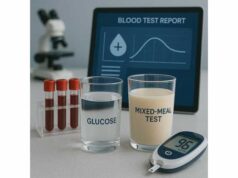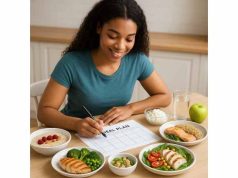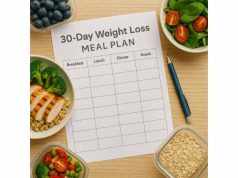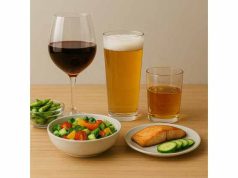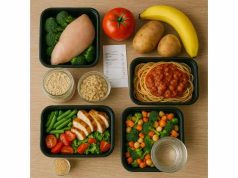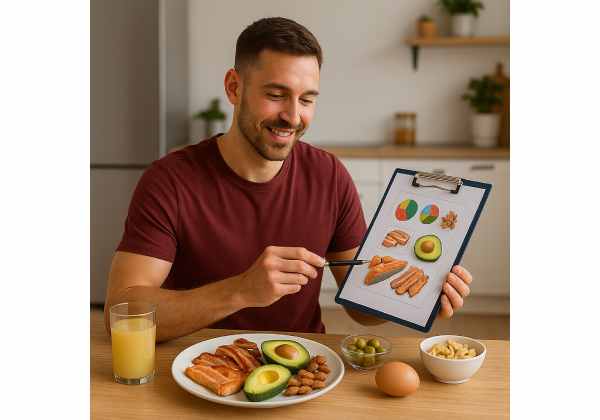
Losing weight gets easier when meals feel complete. Dietary fat helps by adding flavor, improving fullness, and carrying fat-soluble vitamins—yet it is also calorie-dense, so portions matter. The goal is to find a daily fat range that keeps you satisfied while you stay in a calorie deficit. In this guide, you will learn how much fat to eat, which sources to prioritize, how to measure portions without obsessing, and what to adjust if progress stalls. If you still need to set your overall calories and macro targets, start with our plain-English overview of calorie budgeting and meal planning, then plug the fat framework below into your routine.
Table of Contents
- Why fat matters in weight loss
- How much fat per day?
- Best fats to choose and limit
- Easy portion guides and swaps
- Common mistakes and fixes
- Special cases and safety
- What the evidence says
- Frequently Asked Questions
Why fat matters in weight loss
Fat is not the enemy of fat loss. Used well, it makes leaner meals feel like real meals. That matters because weight loss depends on adherence: you are more likely to maintain a calorie deficit when lunch and dinner satisfy your appetite and taste good.
What fat does for you
- Satiety and satisfaction. Fat slows stomach emptying and deepens flavor, which reduces the urge to keep snacking after you finish eating.
- Nutrient absorption. Vitamins A, D, E, and K need fat to be absorbed. A salad without any fat can be filling yet less nutritious.
- Essential fatty acids. You must get omega-3 and omega-6 fats from food; your body cannot make them.
- Blood sugar stability. Pairing carbs with fat and protein softens sharp spikes and dips, which can help curb cravings later.
Why portions still matter
- Energy density. At nine calories per gram, fat adds up faster than protein or carbohydrate. A heavy pour of oil can double the calories in a bowl that looks “light.”
- Hidden sources. Restaurant vegetables, nut butters, dressings, aioli, pesto, cheese, and roasted nuts are easy to underestimate.
How fat fits on a weight-loss plate
- Start with a protein anchor (25–45 g), pile on high-volume plants (2–3 cups), add smart carbs (½–1 cup cooked), and finish with 2–4 teaspoons of flavorful fats.
- Use acid, heat, and herbs—lemon, vinegar, chili, fresh herbs—to need less oil without sacrificing taste.
If you want broader weight-loss fundamentals before dialing in fat, skim our guide to safe weight-loss basics and then return to set your daily range below.
How much fat per day?
There is no single “best” number. The right amount of fat is enough for satiety and nutrient absorption while keeping you in a calorie deficit. Use one of these methods and adjust by appetite and progress.
Method 1: Percent of calories (simple)
- Most people do well at 25–35% of daily calories from fat during fat loss.
- If you prefer lower-fat meals or higher-carb training days, try 20–25%. If you prefer richer foods or a lower-carb approach, 30–40% can work—so long as calories stay in check.
Method 2: Grams per body weight (practical floor)
- A sensible minimum for most active adults is 0.6–0.8 g fat per kilogram of body weight (about 0.27–0.36 g per pound).
- Many people feel best between 0.8–1.0 g/kg when dieting, especially if meals are very lean otherwise.
Quick examples
- 1,600 calories/day:
- 25% fat → 400 kcal from fat → ~44 g/day
- 35% fat → 560 kcal from fat → ~62 g/day
- 2,000 calories/day:
- 25% fat → ~56 g/day
- 35% fat → ~78 g/day
- 2,400 calories/day:
- 25% fat → ~67 g/day
- 35% fat → ~93 g/day
When to choose the lower end
- You enjoy high-carb foods (rice, potatoes, pasta, fruit) and train with intensity.
- You get plenty of flavor from spices, acids, and lean proteins, so you do not miss the extra fat.
When to choose the higher end
- You prefer lower-carb meals.
- You need more help with fullness and find that a bit more oil, nuts, or avocado prevents nibbling.
- You are willing to measure fats carefully.
Make grams tangible
- 1 tbsp oil or nut butter = ~14 g fat.
- 1 oz (28 g) almonds = ~14 g fat.
- ½ avocado (medium) = ~12–15 g fat.
- 85 g (3 oz) salmon = ~10–12 g fat (varies by species).
Dial fat in alongside protein and carbohydrate so the whole day adds up. If you need macro context, skim our guide to macro ratios for fat loss and then return to set your final target.
Best fats to choose and limit
All dietary fats provide energy, but their source and context shape how filling and nutrient-dense a meal feels. Favor fats that deliver flavor, texture, and useful nutrients for the fewest “silent” calories.
Fats to feature (most days)
- Monounsaturated fats (MUFAs): extra-virgin olive oil, olives, avocado, almonds, peanuts. Great for dressings, roasting, and finishing.
- Polyunsaturated fats (PUFAs): walnuts, sunflower seeds, pumpkin seeds, tahini; canola and safflower for high-heat cooking.
- Omega-3s (EPA/DHA): salmon, trout, sardines, mackerel. Aim for two servings of fatty fish per week. Plant ALA sources (chia, flax, walnuts) are helpful, too.
Fats to use in moderation
- Saturated fats: butter, ghee, coconut oil, higher-fat meats, and full-fat cheese. They are flavorful but easy to overuse—measure them and balance with MUFAs and PUFAs.
- Ultra-processed spreads and creamy dressings: tasty, but portion creep is common. Measure with teaspoons.
Trans fats
- Avoid partially hydrogenated oils. Most countries have curtailed them, but some pastries and fried foods still contain small amounts.
Cooking without “free-pouring”
- Use 2–4 teaspoons oil per person for roasting; toss vegetables in a bowl for even coating instead of pouring on the sheet.
- Finish with acid and herbs (lemon, vinegar, parsley, dill) to use less oil while keeping meals satisfying.
- For high heat, choose refined avocado, canola, or safflower; reserve extra-virgin olive oil to roast at moderate heat or finish dishes.
Fat plus fiber = staying power
- Combine measured fats with high-fiber plants so portions look generous and hunger stays predictable. If you need a fiber game plan, see our guide to daily fiber targets and simple swaps.
Easy portion guides and swaps
You do not need a food scale to manage fat. Use small, repeatable habits that keep flavor high and calories honest.
Hand and spoon rules
- Thumb = ~1 tsp oil or butter (~5 g fat).
- Two thumbs = ~2 tsp.
- Tablespoon = ~14 g fat (oil or nut butter). Measure dressings and oils for two weeks; your eye will learn the amount.
Default plate finishes (per serving)
- Salads: 2 tsp olive oil + lemon or vinegar. Add 1–2 tsp seeds or nuts if needed.
- Grain bowls: 1–2 tsp pesto, tahini, or olive oil after cooking.
- Roasted vegetables: 2 tsp oil before roasting; finish with citrus.
- Protein: brush with 1 tsp oil before grilling; finish with fresh herbs.
High-flavor, lower-fat swaps
- Mayo → Greek yogurt + mustard/lemon in chicken or tuna salad.
- Alfredo → blended cauliflower or white-bean sauce with 1 tsp parmesan and a drizzle of olive oil.
- Heavy dressings → vinaigrettes with measured oil and a splash of citrus.
- Big handfuls of nuts → pre-portioned 15–20 g snack packs.
Snack ideas (measured)
- Apple slices + 1 tbsp peanut butter.
- Whole-grain crackers + 2 tsp hummus and olives (measured).
- Cottage cheese with salsa and 1 tsp pumpkin seeds.
If you like plate visuals, our plate method guide shows how to size fats next to proteins, carbs, and vegetables.
Common mistakes and fixes
“Healthy” pours that double calories
Olive oil and nut butters are nutritious, but unmeasured spoonfuls add hundreds of calories. Fix: move oils and dressings to 2–4 tsp containers; drizzle at the table.
Cheese as a habit, not a garnish
Cheese belongs as a measured accent (1–2 tsp grated parmesan; 20–30 g crumbled feta). Fix: treat cheese like salt—use for impact, not bulk.
Low-fat everything, then evening hunger
Very low-fat days can feel unsatisfying and lead to night snacking. Fix: include one measured fat at each meal; pair with protein and fiber.
Restaurant vegetables swimming in oil
Sides can be sautéed in more fat than you expect. Fix: ask for light oil or steamed/grilled; request dressings on the side.
Bulletproof coffee as breakfast
Butter and oil in coffee add many liquid calories without protein or fiber. Fix: keep coffee simple and eat a protein-rich breakfast instead.
Nuts by the handful
Great nutrients, but handfuls become meals. Fix: portion 15–30 g at a time.
If your progress stalls for two to three weeks, check for these leaks and skim our quick fixes for common diet mistakes to get momentum back.
Special cases and safety
How low is too low?
Consistently dropping below ~20% of calories from fat (or <0.6 g/kg body weight) can make meals less satisfying and may interfere with fat-soluble vitamin absorption. If hunger rebounds at night or your meals feel flat, raise fat slightly and reassess.
Cholesterol or triglyceride concerns
Favor unsaturated fats (olive oil, nuts, seeds, fatty fish). Keep saturated fats modest and watch alcohol and added sugars if triglycerides run high.
Gallbladder issues or fat malabsorption
Large, high-fat meals can be uncomfortable. Spread fat across meals and choose leaner proteins with small additions of oil or avocado. Work with your clinician for personalized targets.
Athletes and heavy training
Shift more fat away from pre-workout windows to avoid GI discomfort; use lower-fat carbs before and after training and add fats later in the day.
Vegetarian or vegan
It is easy to meet fat needs with nuts, seeds, tahini, avocado, tofu, and olive oil. Include ALA sources (chia, flax, walnuts) and consider fatty-fish alternatives or discuss algae-based omega-3s with your clinician.
Low-carb or low-fat—what to choose?
Pick the pattern that helps you eat fewer total calories consistently. If you are deciding between styles, our comparison of low-carb versus low-fat can help you match the approach to your preferences and training.
What the evidence says
Across many trials, people lose weight on both higher-fat and lower-fat diets when calories and protein are matched—the consistent success factor is adherence. That is why your fat target should be personal: enough to make meals satisfying and sustainable, not so high that it squeezes out protein, plants, and your calorie budget.
What tends to work in practice
- Protein + plants + measured fats beats micromanaging every gram.
- Unsaturated fat emphasis (olive oil, nuts, seeds, fish) supports cardiometabolic health while keeping food enjoyable.
- Small, repeated habits—measuring oils, finishing with citrus and herbs, portioning nuts, and ordering dressings on the side—prevent slow calorie creep.
A realistic timeline
- Week 1–2: learn your “just-enough” fat amounts per meal (often 2–4 tsp). Hunger stabilizes, and late-night snacking drops.
- Week 3–8: with calories and protein in place, steady loss is common. Adjust fat up or down by 5–10 g/day based on appetite and progress.
- Beyond 8 weeks: tighten restaurant choices, measure fats again for a week, and recheck snack habits if progress plateaus.
Bottom line
Fat is not a villain or a magic lever. It is a tool. Use enough to make leaner, plant-forward plates taste great and keep you full—then let consistency do the rest.
Frequently Asked Questions
How many grams of fat should I eat to lose weight?
Most people do well at 25–35% of calories from fat or 0.6–1.0 g/kg of body weight. Start in the middle, track appetite and progress for two weeks, then adjust by 5–10 g/day to find your personal “just-enough” level.
Is 20% of calories from fat too low?
It can work short-term, but many people feel less satisfied and snack more later. If you try ~20%, prioritize unsaturated fats and include a measured fat at each meal. If hunger rebounds at night, increase fat slightly and reassess.
Which oils are best for weight loss?
No oil is inherently “fat-burning.” Choose oils you enjoy and measure them. Use extra-virgin olive oil for flavor and finishing, and canola or refined avocado/safflower for higher-heat cooking. The key is 2–4 teaspoons per serving, not free-pours.
How much saturated fat is okay?
Keep saturated fat modest—treat butter, coconut oil, and higher-fat meats as accents. Balance them with olive oil, nuts, seeds, and fish. If cholesterol is a concern, favor unsaturated fats and speak with your clinician for specific targets.
Can I lose weight on a higher-fat, lower-carb diet?
Yes—if total calories are lower than maintenance and protein is adequate. Some people find lower-carb, higher-fat meals more satisfying; others prefer higher-carb. Choose the style you can sustain while hitting your calorie and protein goals.
Do I need omega-3 supplements?
Aim for two servings of fatty fish per week first. If you rarely eat fish, discuss omega-3 options with your clinician. Plant sources like chia, flax, and walnuts contribute ALA; algae-based DHA/EPA may be considered for non-fish eaters.
References
- Description of the Acceptable Macronutrient Distribution Range 2024.
- Effects of low-carbohydrate diets versus low-fat diets on metabolic risk factors in overweight and obese adults: A meta-analysis of randomized controlled trials 2022 (Systematic Review/Meta-analysis).
- Fat-Soluble Vitamins A, D, E, and K: Review of the Literature and Points of Interest for the Clinician 2024 (Review).
Disclaimer
This article provides general education and is not a substitute for personalized medical advice, diagnosis, or treatment. Always consult your healthcare professional about nutrition changes—especially if you have high cholesterol or triglycerides, gallbladder or pancreatic disorders, diabetes, kidney or liver disease, are pregnant or breastfeeding, or have a history of disordered eating.
Share and follow
If this guide helped you find a fat target that keeps meals satisfying, please share it with someone who is building a sustainable plan. For new practical articles and templates, follow us on the social platform you use most—Facebook, X, or another network you prefer.

